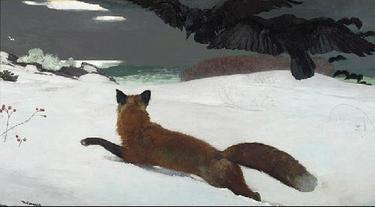Today, long after yesterday’s post on the subject, I learned of a third museum housecleaning, and there was a press release all right, but it came after the fact. Is that better than nothing? Yes, but it’s not ideal. Worse, the deaccessions took place through galleries — so we do not know the asked prices, the final prices or who was shown the works. That’s not good, imho.
 The Pennsylvania Museum of Fine Arts is the museum in question, and on Jan. 5 it issued a press release headlined “PAFA Strengthens Its Renowned Collection of American Art.” Who would quarrel with that?
The Pennsylvania Museum of Fine Arts is the museum in question, and on Jan. 5 it issued a press release headlined “PAFA Strengthens Its Renowned Collection of American Art.” Who would quarrel with that?
The first few paragraphs are all about buying works by Dorothea Tanning, Nancy Spero, Philip Evergood, and so on, and PAFA says: “The strategic plan, approved by PAFA’s Board of Trustees, calls for the growth of the collection through gift and purchase to fill gaps, including improving its holdings of Hudson River School artists, selected movements in 20th-century art, and contemporary art. In addition, PAFA seeks to add greater representation of works by women and African Americans.”
Only then do we learn that PAFA sold five paintings to raise money for the purchases, and they aren’t cheesy:
- Autumn Still Life by William Merritt Chase (sold by Avery Galleries),
- Flowers (1893) by John H. Twachtman (sold by Menconi & Schoelkopf),
- Looking over Frenchman’s Bay at Green Mountain (1896) by Childe Hassam (sold by Avery Galleries),
- Bathers in a Cove (1916) by Maurice Prendergast (sold by Menconi & Schoelkopf),
- Great White Herons (1933) by Frank Weston Benson (sold by Menconi & Schoelkopf).
The proceeds approached $5 million, all told, the release said, and
In each case, the artists of deaccessioned works are represented in PAFA’s collection by more important examples and/or ones that relate better to core works in the permanent collection. The recommended works were reviewed by independent curators, scholars and PAFA’s Collections Committee and approved for sale by the Board of Trustees.
Later still, we learn:
PAFA’s Board has also approved the sale of five additional works: Girl at Piano (ca. 1887) by Theodore Robinson (consigned to Menconi & Schoelkopf), Top of Cape Ann (1918) by Childe Hassam (consigned to Menconi & Schoelkopf), The Turkey (1927) by Arthur B. Carles (consigned to Menconi & Schoelkopf), Peggy’s Cove, Nova Scotia (1924) by Ernest Lawson (consigned to Menconi & Schoelkopf), and Still Life #1 (1827) by James Peale (consigned to Avery Galleries).
Not to sound like a broken record, but… I’m not against all deaccessioning by any means. But I do believe in transparency before the act. And I believe other museums should be offered a chance to buy the works first, and that is better achieved at public auction than private sale.
The Philadelphia Inquirer, oddly, praised the after-the-fact disclosure…here…calling it “highly unusual.” Well, maybe unusual, but not a model. (PAFA proudly posted a link in its press area.)
I don’t want to be too hard on PAFA, though — it’s a little better at disclosure than many museums. It publishes its strategic plan online, for example, though it’s very bare-bones.
PAFA had taken down all images of the deaccessioned works, if they had been in the online database at all, and I’m writing this afterhours — so I can’t ask for images of them. Instead, I’m posting one of my favorite works in PAFA’s collection, Homer’s Fox Hunt.
Photo Credit: Courtesy of PAFA
